The Ultimate Guide To Making Money On Shopify: 13 Earning Ideas in 2024
In this article, we’re about to unlock the potential of Shopify by revealing 13 powerhouse strategies to supercharge your Shopify store’s profitability, empowering you to achieve your financial goals.
Exclusive Offer: Get Shopify 33 days for just $1 + The Online Store Starter Kit
Start your 3-day free trial, and enjoy your first month of Shopify for 1$ plus the premium package designed especially for new Shopify merchants!
13 Ways To Make Money With Shopify
E-commerce Storefronts
One of the primary reasons you should opt for this approach is its simplicity. You’re essentially setting up an online store, showcasing products you wish to sell, and reaching a global audience. Additionally, unlike physical stores, an online store isn’t restricted by location, meaning you can sell to anyone, anywhere, at any time. The ease of selling a product often depends on market demand, competition, and your marketing strategies. However, evergreen products like clothing, jewelry, beauty products, and home essentials often enjoy consistent demand. That said, trending products, which can be identified through market research tools or social media, can generate significant sales quickly. Choosing products that resonate with your target audience and have a clear value proposition is essential.
This approach emphasizes Shopify’s core strength as a renowned ecommerce store builder. Unlike physical stores, an online store isn’t limited by location, allowing you to sell to anyone, anywhere, at any time.
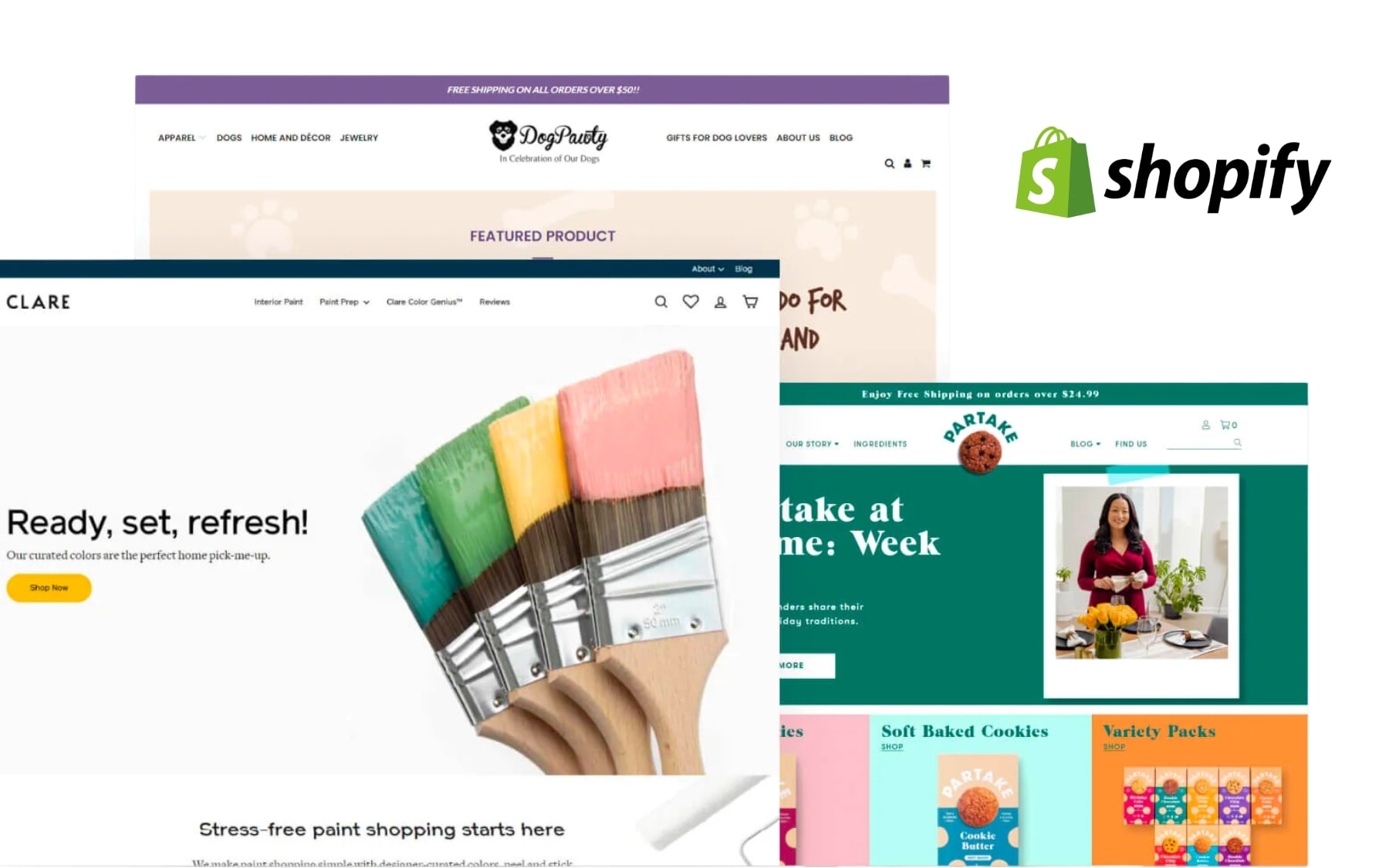
One of the most significant benefits is the level of control it affords you. When you have your own Shopify store, you have complete autonomy over your brand’s identity, product listings, pricing strategies, and overall operating tools.
Additionally, Shopify has over 150 ready-made themes on the Shopify theme stores that cater to many industries and categories, whether you sell clothes or electronic devices, there will be a theme for you.
Case studies
Let’s briefly explore the success of live stores using the Shopify platform. Kylie Cosmetics, founded by the most influential woman in the world, Kylie Jenner, is a thriving Shopify-powered beauty brand, generating $500 million to $1 billion in revenue annually.
They specialize in makeup and skincare cosmetics. The brand opted for the Shopify Plus platform to construct its e-commerce website, focusing on a design that highlights simplicity, predominantly employing pink and white as the primary color palette.
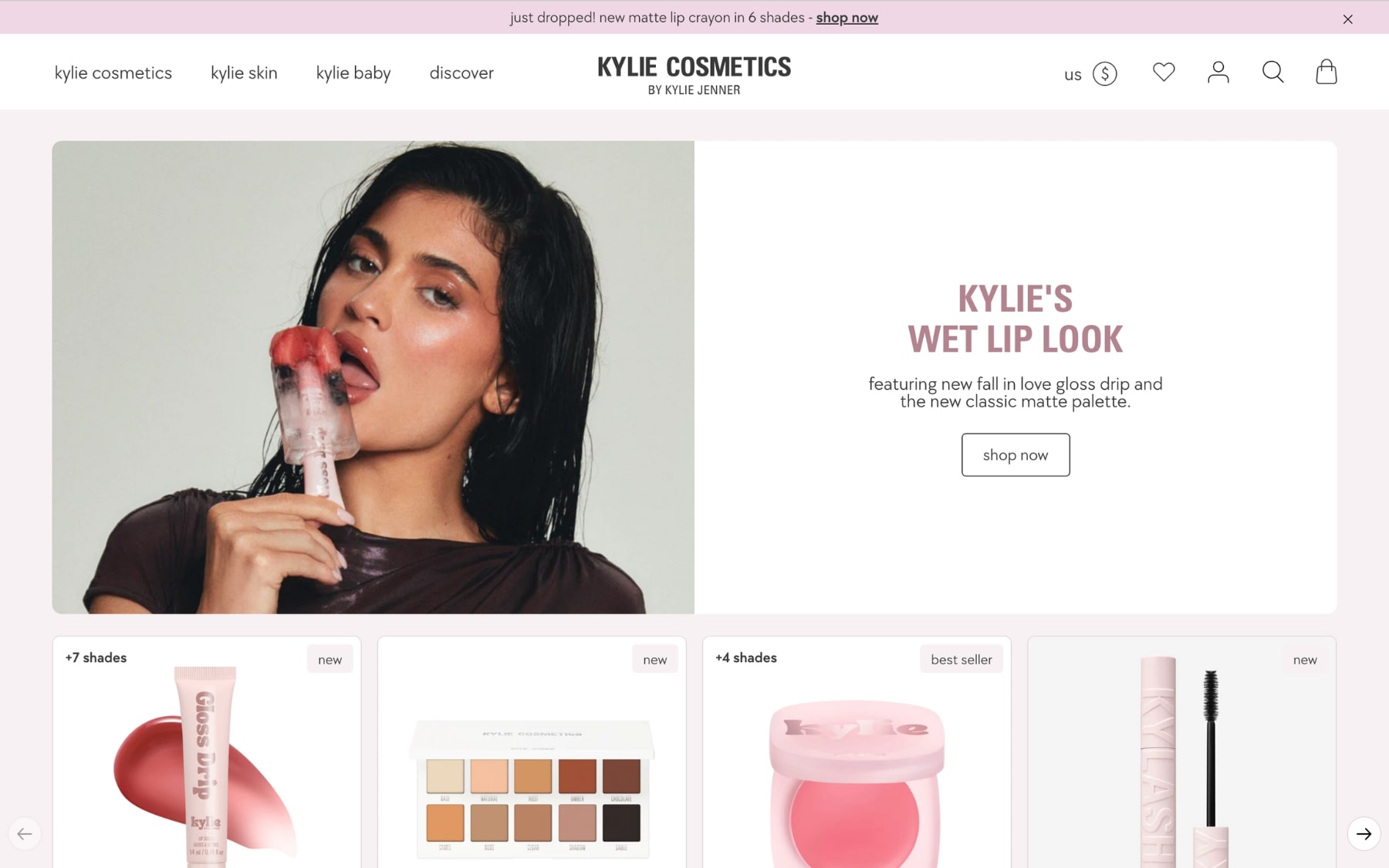
Their success stems from leveraging Kylie’s immense social media influence, creating buzz around product launches, and offering a limited quantity of high-quality makeup edition items that appeal to customers’ FOMO mentality.
Another well-known name, Fashion Nova, is a renowned fashion brand with a strong presence in North America and Europe. They offer various fashion products and accessories for all ages, featuring diverse styles, colors, and sizes in line with US-UK fashion standards. Fashion Nova secured the top spot as the most searched fashion brand online in 2018.

Their e-commerce website, powered by Shopify Plus, can seamlessly handle a massive influx of traffic, welcoming approximately 25.5 million monthly visitors. The website boasts essential e-commerce functionalities coupled with a distinct and industry-specific design.
Dropshipping
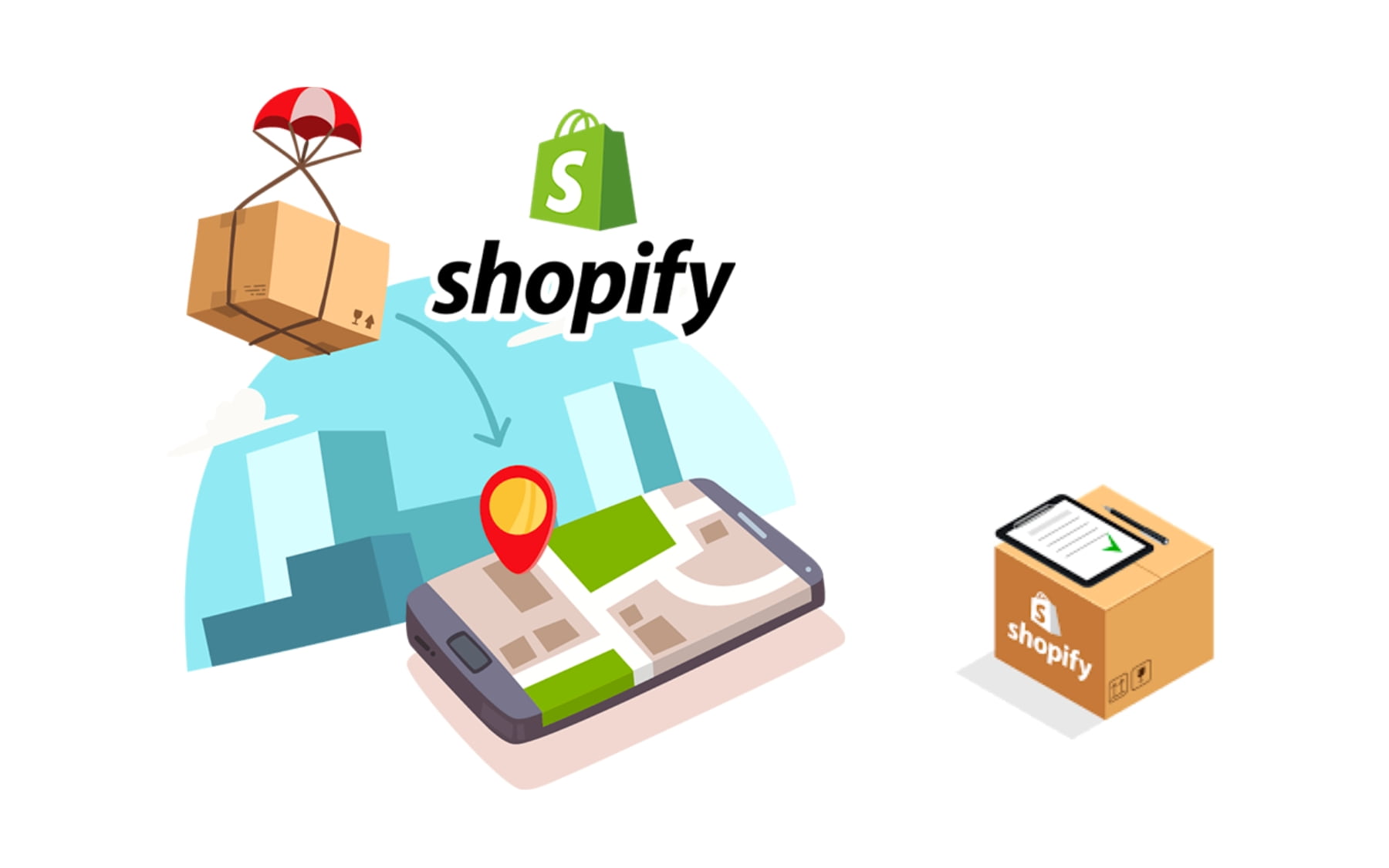
Shopify supports the dropshipping business model by providing an array of user-friendly tools and features designed to simplify setting up and managing an online store.
Regarding product selection, lightweight, durable, and within a moderate price range are typically easiest to dropship. Products in niche categories, like fitness accessories, beauty products, or pet supplies, often prove popular due to their steady demand. However, conducting market research to identify trending products and understand your target audience’s needs and preferences is crucial.
Shopify aids in making money through dropshipping by offering seamless integration with various dropshipping apps and suppliers like Dser, Modalyst, Alibaba, etc. These integrations simplify product importation and order fulfillment. With Shopify, users can efficiently manage their storefront, conduct transactions, and handle customer service in a centralized platform. The platform also supports various payment gateways, making transactions smoother and more convenient for sellers and buyers.
Case studies
Some outstanding examples serve as a source of inspiration and demonstrate the incredible potential that dropshipping offers for entrepreneurs in the e-commerce arena.
Haus, a flourishing Shopify dropshipping store based in London, specializes in a wide range of stylish and unique furniture tailored for contemporary homes. Their website comprises over 80 distinct brands sourced globally. Their offerings encompass creations from prominent European design houses, internationally acclaimed designers, and hidden gems from smaller producers and independent design talents.

Notebook Therapy exemplifies a specialized Shopify store catering to the niche market of journaling and writing supplies. Their product range includes minimalist bags, pencil cases, notebooks, and phone cases. The store’s appealing design showcases a delightful layout with a pastel color scheme. It has over 1 million followers on Instagram.

Print-on-demand
Running a print-on-demand (POD) business is similar to drop shipping because it eliminates the need to manage inventory or deal with shipping logistics.
In some terms, a POD store can be more effective than a dropshipping business:
- Create unique, custom-designed products that can set your brand apart from competitors.
- Maintain a higher level of quality control since you design and choose the products yourself.
- Eliminate the risk of holding unsold stock altogether
- Less depends on the reliability and performance of suppliers.

Undoubtedly, print-on-demand on Shopify offers a low-risk and creative way to enter the e-commerce space. Shopify caters to this business model with a wide range of integrations and extensions to assist you in customizing products and simplifying the print-on-demand process, especially for Printify, Printiful, Tpop, Gooten, etc.
T-shirts are among the most accessible products to start with when considering print-on-demand. They are universally worn, appeal to a broad audience, and the printing process is straightforward. Additionally, t-shirts provide a sizable canvas for showcasing graphic, text-based designs, or a mix of both. Other easy-to-start products include mugs, phone cases, and posters.
Case studies
The Feminist Vibe is a POD store that centers around feminist values and gender equality. It offers a range of apparel, accessories, and home decor items with empowering slogans and designs. Their products encourage self-expression and the celebration of feminist ideals.
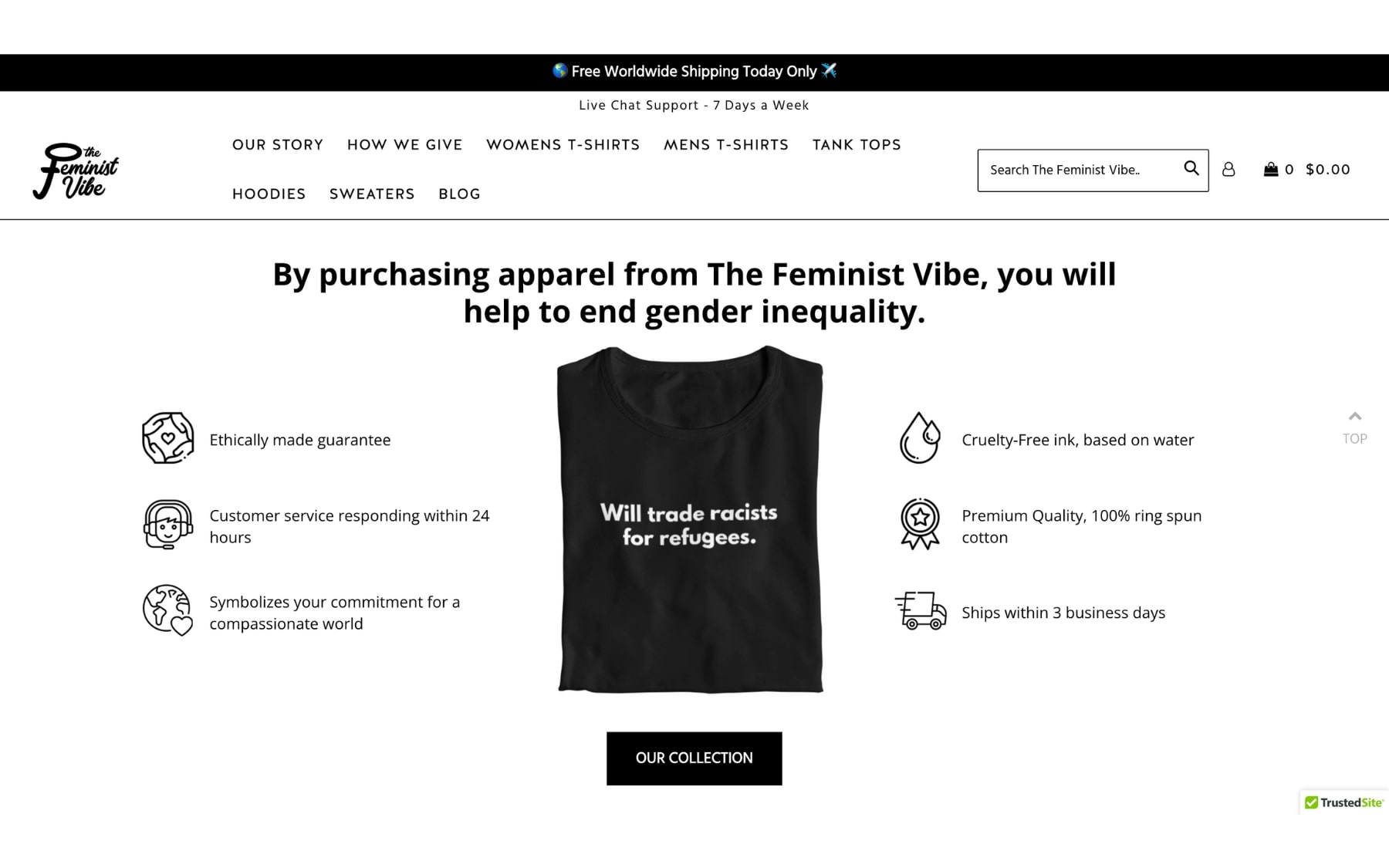
In addition to selling products, “The Feminist Vibe” may provide educational content related to feminism and gender issues, helping to engage and educate its audience.
Pop Chart creates visual infographics that transform complex information into stunning, easy-to-understand art prints. It offers a wide array of beautifully designed posters, prints, and even scratch-off prints with an artist’s approach, catering to individuals with a penchant for aesthetics and knowledge.
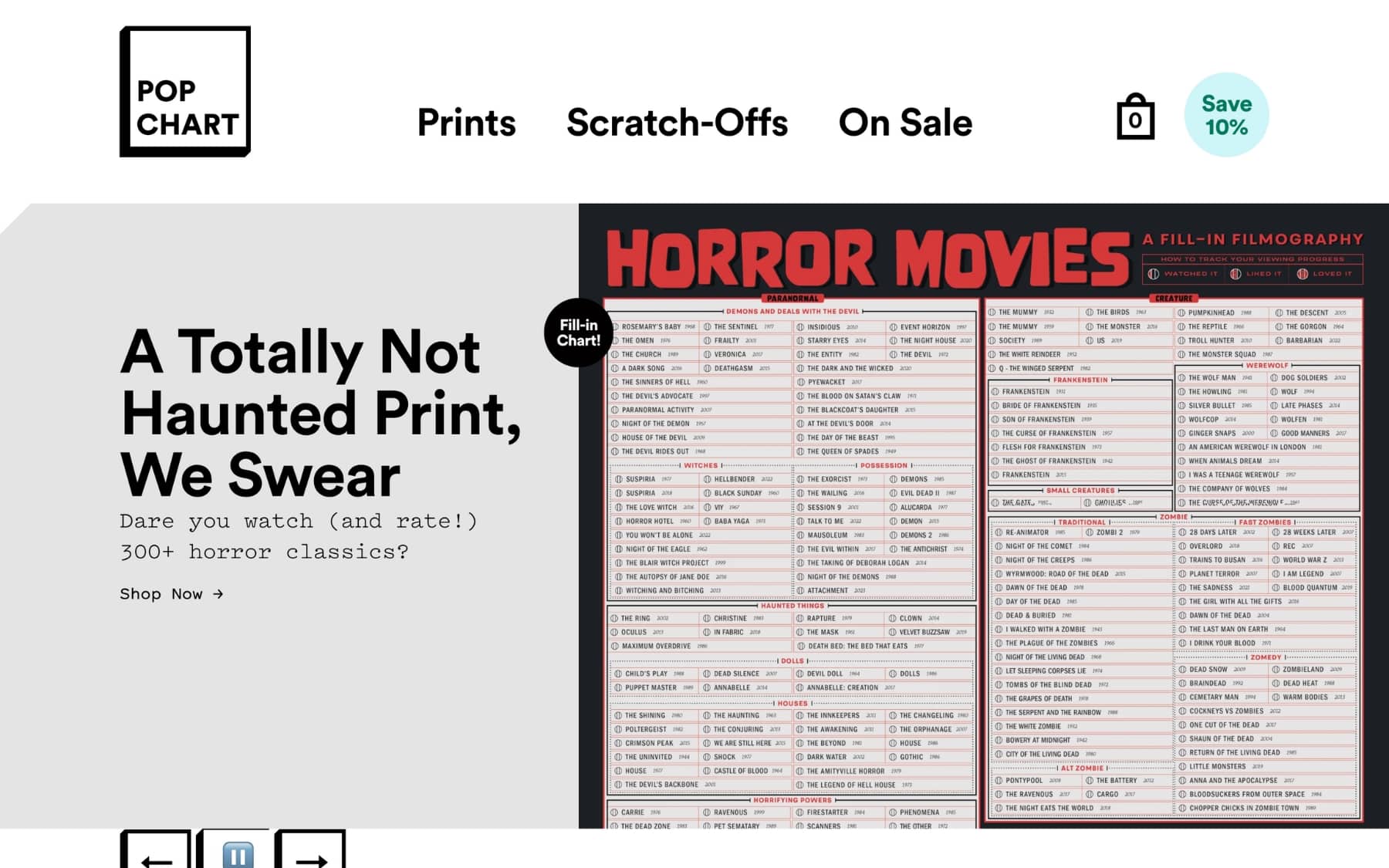
Sell Digital Downloads and Products
Digital downloads encompass diverse offerings like ebooks, sewing and embroidery patterns, spreadsheet templates, sheet music, and more. The significance of this approach lies in its freedom from the hassles of managing inventory, shipping logistics, or supplier relationships and in its ability to sell millions of products at a time.
For digital products, Shopify offers apps like Digital Downloads, which automate delivering the digital file to the customer after purchase. This ensures that your customers receive their purchased products instantly and securely. Moreover, Shopify offers a suite of marketing tools and integrations to help promote digital products effectively.
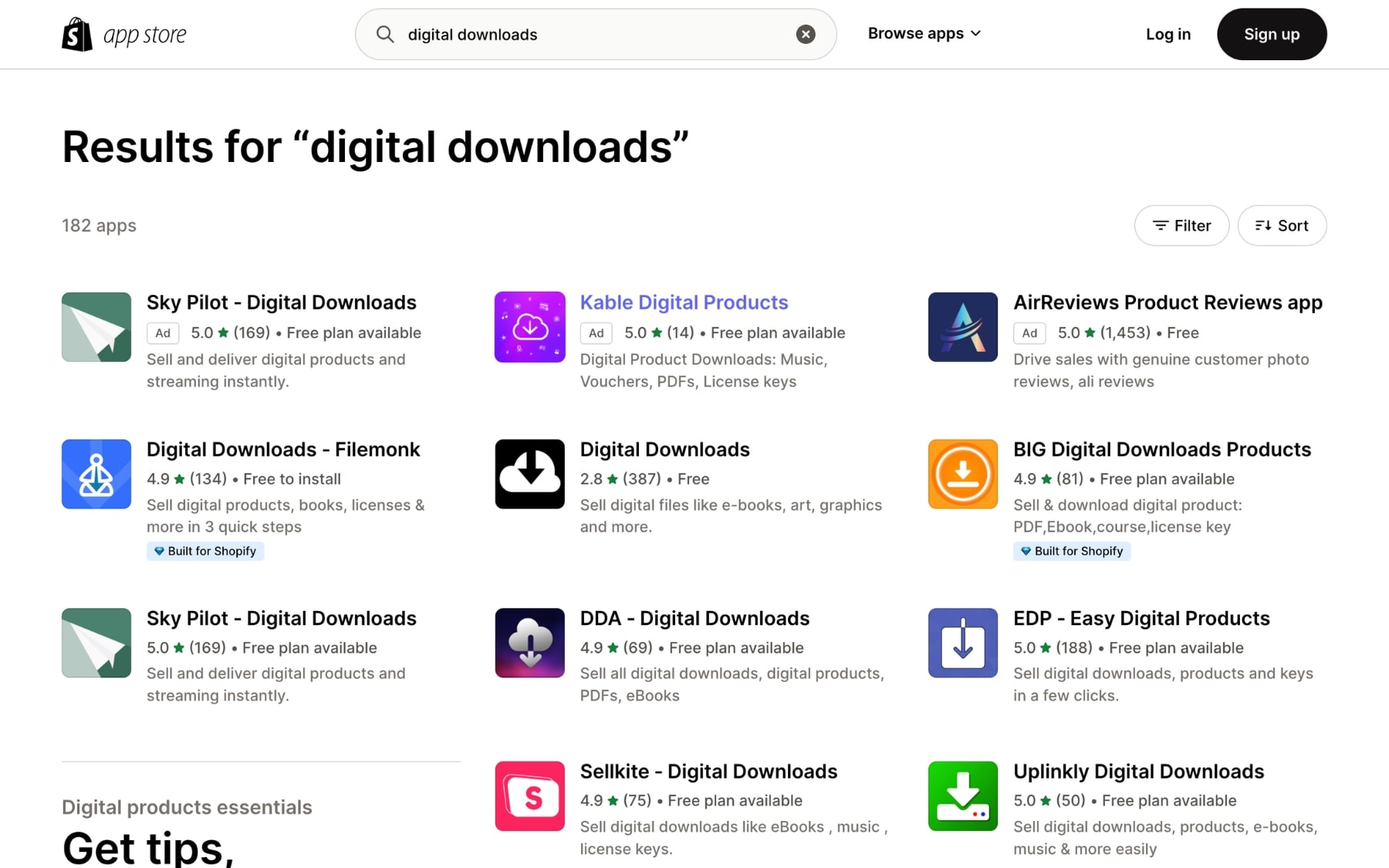
We’ve written a comprehensive guide on selling digital downloads on Shopify. If you’re considering this as a revenue stream, we recommend reading it.
Case studies
The Luxe Lens goes beyond the conventional photography store by offering photographers a comprehensive range of tools, templates, and courses. They also provide free classes, which are a quality indicator for their downloads.

For those seeking soothing sounds to aid sleep or concentration, Relaxing White Noise is the ideal online destination. Originating from a popular YouTube channel, it offers a vast collection of ambient sounds, including rain, crackling fireplaces, and even vacuum cleaners.

Services Related to E-commerce
Apart from owning your own store and directly selling products to make money, Shopify’s thriving e-commerce ecosystem has provided many opportunities for users to make a profit through its services.
Theme and App Development
Theme and app development for Shopify is an appealing avenue for entrepreneurs looking to tap into the thriving e-commerce ecosystem. As highlighted in the provided information, the profit potential in this space is significant.
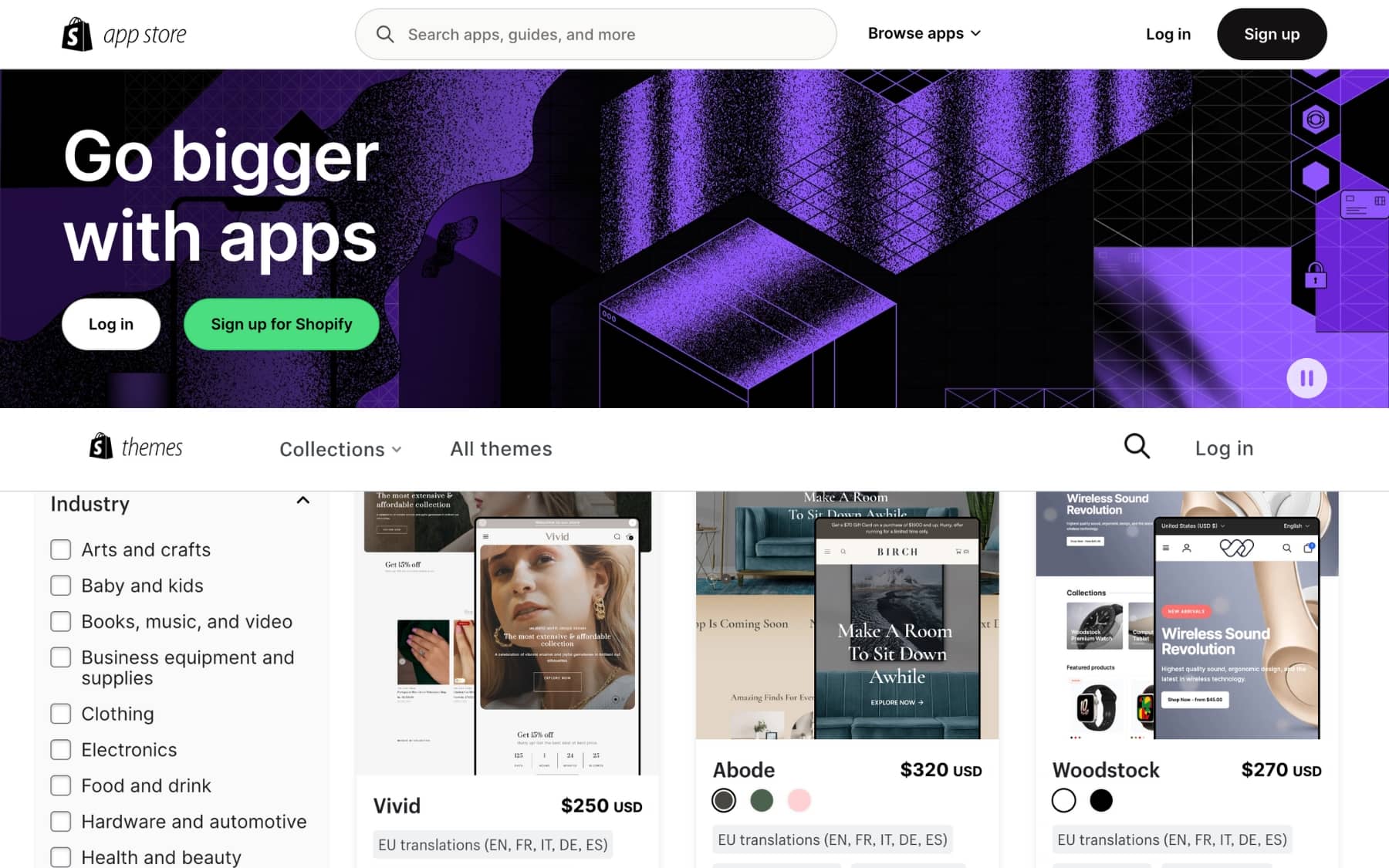
Developers can retain a substantial portion of their sales revenue, with 80% for apps by default and full revenue for themes, until they exceed the $1,000,000 mark, after which they continue to keep 85%. This revenue-sharing model, combined with Shopify’s growing user base, offers the promise of substantial income.
Moreover, not all themes and apps submitted to the Shopify store are guaranteed approval. Shopify maintains stringent quality and security standards, so rejection is possible. This underscores the importance of meeting high-quality standards to gain approval.
Sell Services As A Shopify Expert
Shopify has evolved into an integrated ecosystem that provides a platform for third-party commerce professionals and experts to offer Shopify-related services and resources.

As a Shopify partner or expert, you can offer a range of specialized services, including design, development, marketing, SEO, and more, to assist Shopify store owners in building and scaling their online businesses. With a track record of success, you can tap into a large market of merchants seeking your expertise.
One key advantage is the high demand for Shopify partners, with approximately one in three Shopify merchants reaching out to experts every six months for guidance and support. This presents an excellent opportunity for individuals looking to establish a side hustle or a full-time venture in the e-commerce space.
Affiliate Marketing and Partnerships
Become a Shopify Affiliate Partner
Shopify places significant emphasis on its affiliate program, recognizing it as a primary driver behind the platform’s rapid growth. Effective areas to affiliate within Shopify include e-commerce tools and apps, themes and design services, and online business education.

Shopify offers a commission of $150 for each referral who subscribes to a full-price plan. It’s worth noting that Shopify frequently implements pricing incentives and promotional offers, and commissions are not granted for referrals who solely opt for a free trial.
To effectively get earnings from this sector, you must carefully consider the following aspects:
- Know your audience: To be successful, understand your target audience, including their needs and goals, and tailor your marketing efforts accordingly.
- Create quality content: Develop informative and engaging content that highlights the benefits of Shopify. This can include blog posts, videos, webinars, and social media content.
- Use affiliate tools: Make use of Shopify’s affiliates with various marketing materials, including banners, links, and resources to assist in promotion.
- Build trust: Establish trust with your audience by providing honest and transparent information about Shopify.
- Stay updated: Keep yourself informed about Shopify’s latest features, updates, and promotions.
Content Creation
Blogging
Even on a Shopify website, you can continue to generate income from your blog through many familiar methods, including affiliate marketing and the sale of digital products.
Blogging serves as a versatile tool for income generation. Through effective content creation, bloggers can tap into multiple revenue streams. This includes monetization avenues such as display advertising, affiliate marketing, sponsored posts, and selling digital products or services.
Furthermore, Shopify’s seamless integration of e-commerce features enables bloggers to promote and sell products within their blog posts effortlessly. This enhances the user experience and creates opportunities for increased sales.
Courses and Tutorials
Your Shopify experience can completely turn into products to generate income. Share your knowledge and experience by creating educational content. You can start a blog, YouTube channel, or social media account focused on e-commerce and Shopify tips. Monetize your content through ads, sponsorships, or affiliate marketing.
Expanding Sales Channels
Sell Both Online and Offline With Shopify POS
Selling both online and offline with Shopify POS (Point of Sale) allows for a seamless integration of brick-and-mortar store sales with online e-commerce sales. This dual approach maximizes your reach, catering to both local and global customers. By utilizing Shopify’s comprehensive system, you can manage your inventory, track customer data, and process transactions efficiently in both environments. This multi-channel approach also increases brand visibility, fosters customer loyalty, and provides multiple revenue streams.
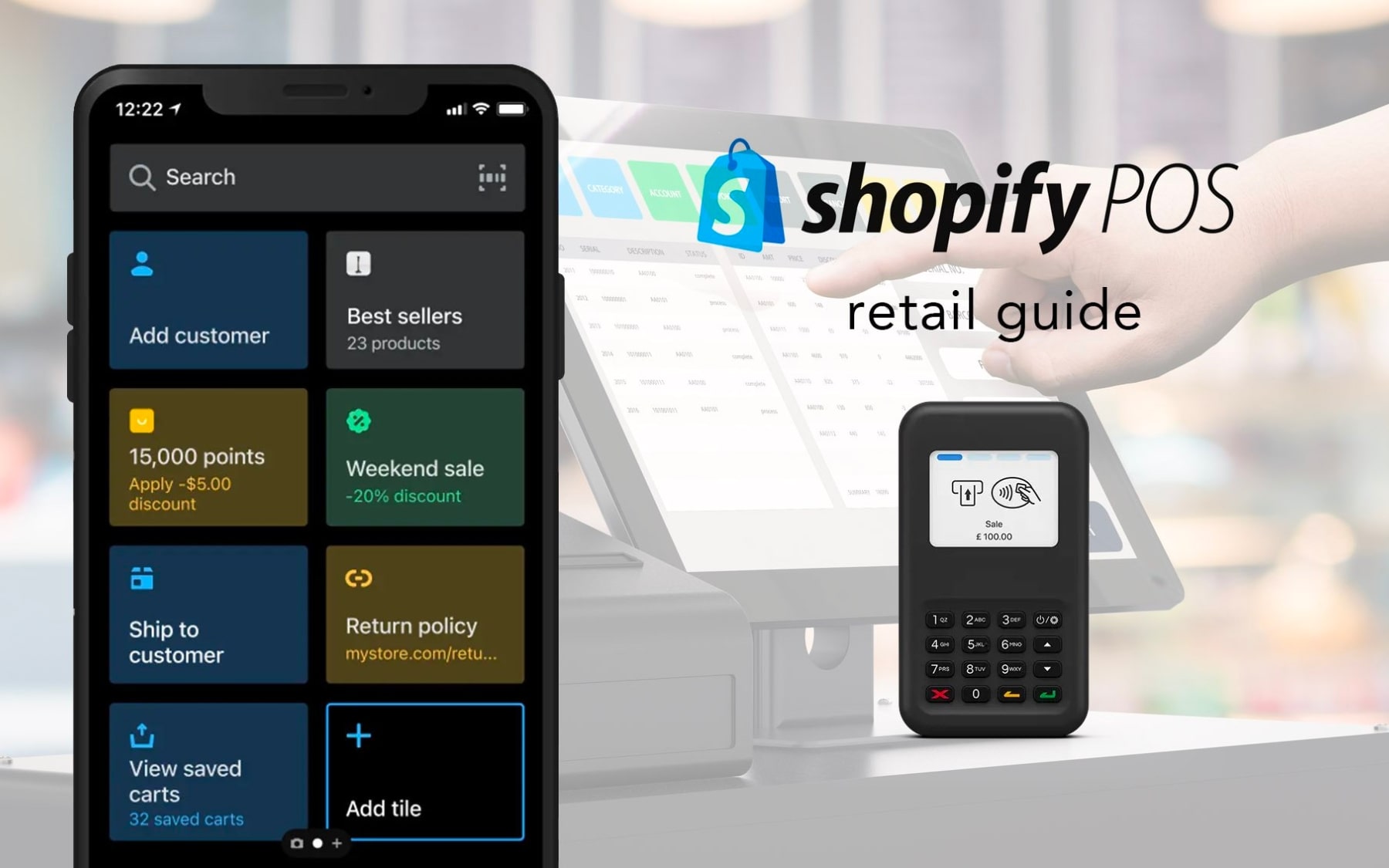
To make money using Shopify’s POS system, begin by setting up online and physical stores. Ensure your inventory is integrated so both platforms pull from the same stock. Promote your brand online through digital marketing strategies like SEO, social media, and email campaigns. In your physical store, offer promotions or in-store exclusives to entice foot traffic. The key is to provide a consistent and unified shopping experience for customers, irrespective of where they choose to shop.
Omnichannel Sales
Making money through omnichannel sales on Shopify is a dynamic approach that seamlessly connects various sales channels to offer a unified shopping experience for customers. The first step is establishing a robust Shopify e-commerce store as your central hub.
Integrating your store with multiple sales channels, such as Amazon, eBay, social media platforms like Facebook, Instagram, TikTok Shop, and even your physical stores, will continuously manage your central system and expand your reach. With these integrations, your product listings can be synchronized across these channels, ensuring you can meet customers’ shopping demands or pick up anywhere and anytime.
Read more: How to Sell Affiliate Products on Shopify in 2024
Third-Party Integrations
You can generate revenue and profit through the Shopify subscription box business without spending on ads.
Subscription Boxes
The subscription business model is emerging as one of the ways to make good money. It offers a predictable and steady income stream, helping businesses forecast potential revenue. Customers also enjoy the excitement of receiving a curated selection of items each month.
This model was popular among sectors like magazines, software, and various service providers. The possibilities for subscription box businesses are diverse, encompassing niches such as food, coffee, personal care, beauty products, and more.
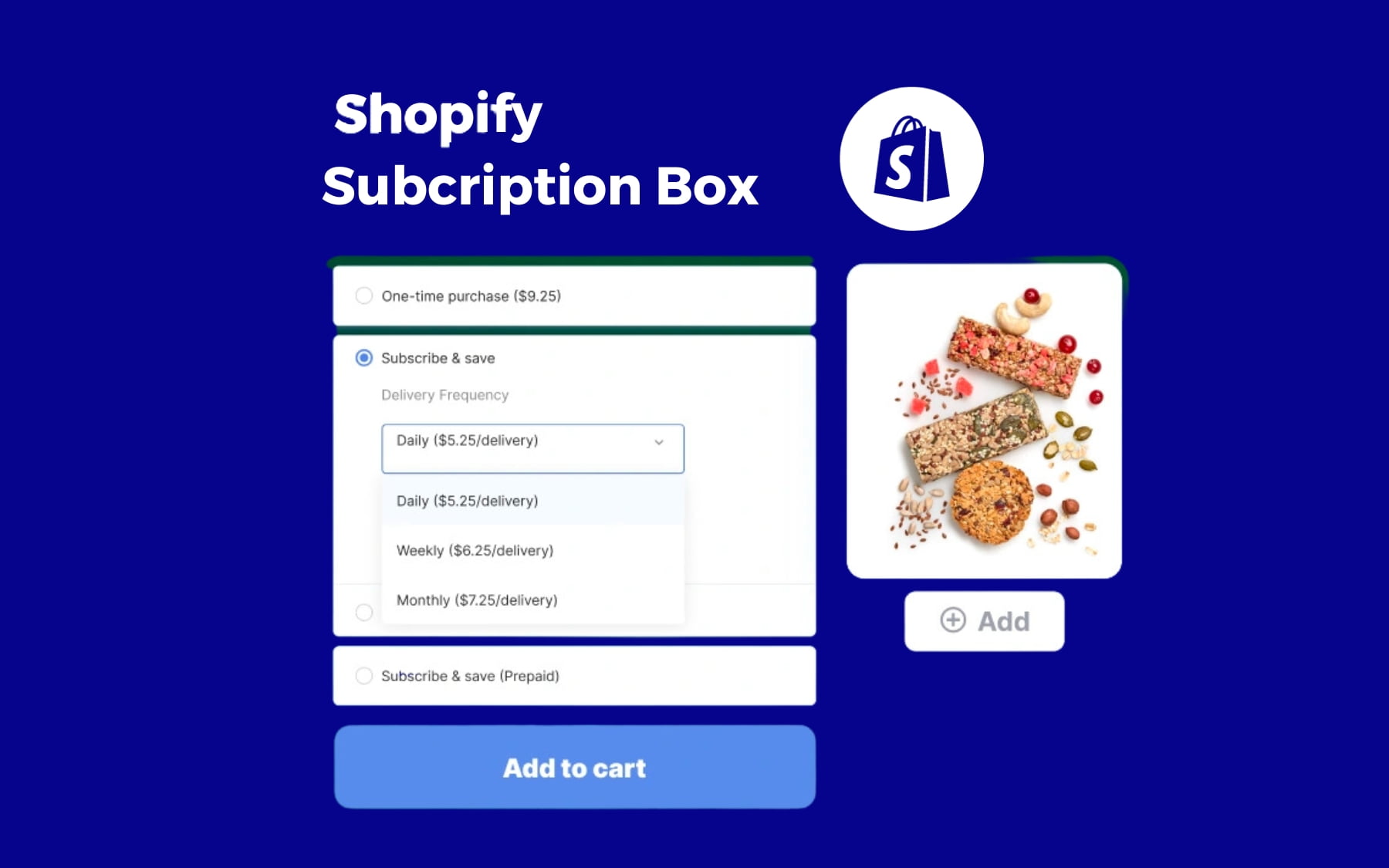
Shopify streamlines the process of setting up and managing a subscription box service. Moreover, the platform integrates with several subscription management apps that automate recurring billing, streamline packaging, and enhance the overall subscriber experience. These apps can handle recurring billing, inventory management, and customer communications. Some recommended subscription apps on Shopify are Appstle Subscriptions & Loyalty, Yotpo Subscriptions, Recharge Subscriptions, and many more.
B2B Services
Last but not least, not only does Shopify cater to individual customers, but it is also capable of processing in bulk to serve large businesses. It is a potential chance to gain a significant amount through selling in mass.
Sell Wholesale
Handshake, administered by Shopify, is an online wholesale marketplace that facilitates connections between brands and qualified retailers.
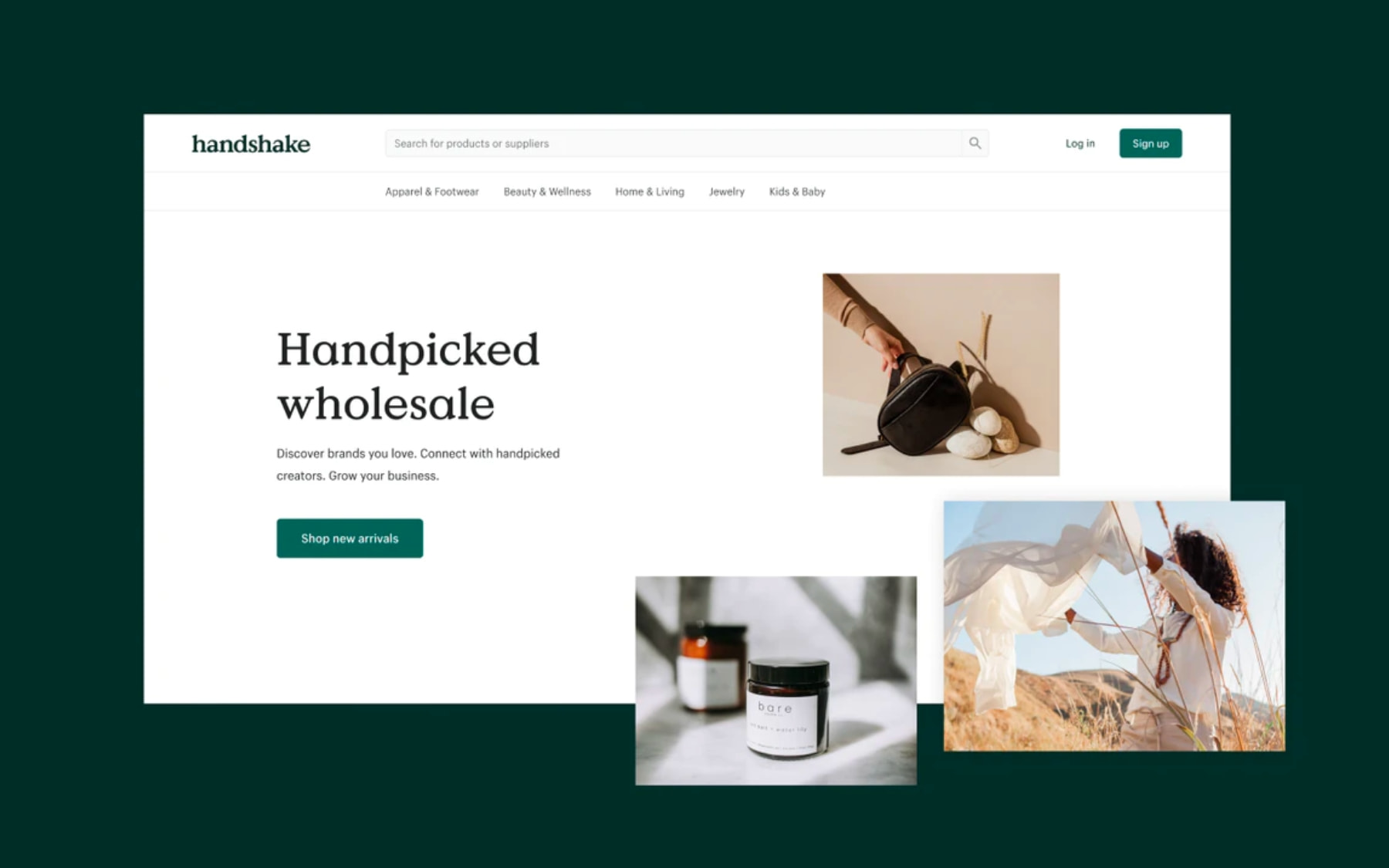
Through Shopify Handshake, you gain access to an array of tools, such as order and inventory management, along with the ability to connect with potential wholesale partners, access their contact details, and place orders directly within the platform.
A notable differentiator for Handshake is its fee structure, as it imposes no commissions or charges for brands or retailers apart from monthly Shopify operating fees and standard credit card processing costs.
Besides Handshakes, there are a wide variety of popular platforms and places where you can sell wholesale on the market:
- Faire: Faire is a leading online wholesale marketplace that connects brands and artisans with retailers. It offers a wide range of products and provides tools for easy order management.
- Alibaba: Alibaba is a global e-commerce giant that allows businesses to source products and connect with manufacturers and suppliers worldwide. It’s particularly popular for sourcing products in bulk.
- Etsy Wholesale: Etsy offers a wholesale platform that allows makers and designers to sell their products in bulk to approved retailers.
- Tundra: Tundra is a B2B wholesale marketplace connecting independent retailers with various brands. It emphasizes eco-friendly and sustainable products.
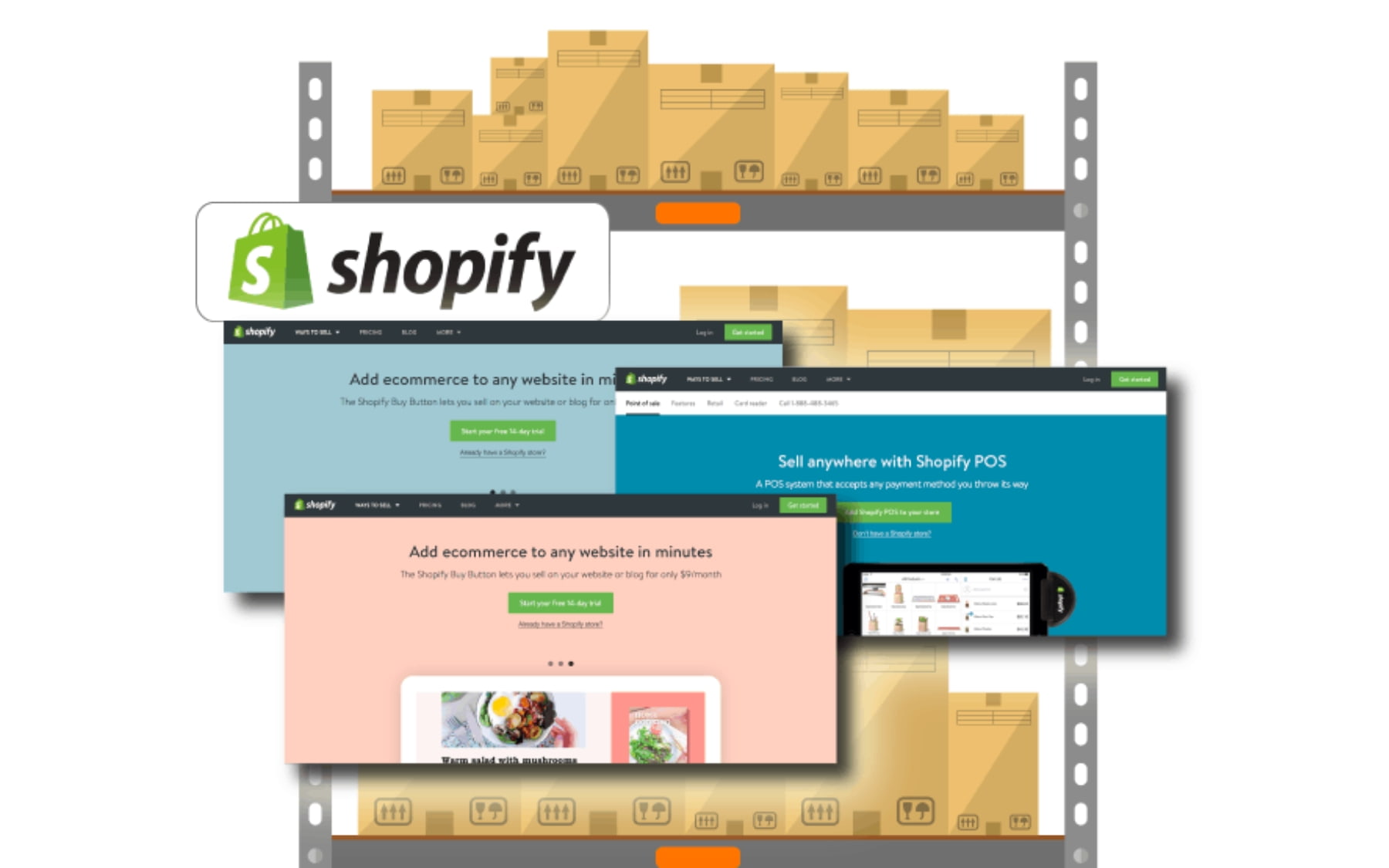
To sell wholesale successfully with Shopify, you must involve strategic planning and the use of key features. Here are some tips
- Tiered pricing: Implement tiered pricing to offer discounts based on order quantities. Shopify Plus allows for automated tiered pricing.
- Minimum order requirements: Establish minimum order requirements to encourage higher purchase volumes from wholesale buyers.
- Wholesale apps: Utilize wholesale-specific apps to manage wholesale pricing, orders, and customer groups.
- Inventory management: Ensure robust inventory management to accurately track stock levels and prevent overselling to both retail and wholesale customers.
- Customer segmentation: Segment your customer list into retail and wholesale groups to send targeted marketing messages and promotions.
- Wholesale marketing: Promote your wholesale offerings through email marketing and social media. Highlight benefits like bulk discounts, exclusive products, and personalized service.
- Clear policies: Establish clear terms and policies for wholesale customers regarding returns, shipping, and minimum order quantities.
Tips To Maximize Profit With Shopify
To achieve success, it is not enough to follow the stream of recommendations; as a merchant, you should prepare yourself with knowledge, learning, and tips about selling on this platform.
Have a unique business idea
With the growing number of online entrepreneurs, distinguishing your products and services from the competition is becoming paramount. Before starting with Shopify, you need an idea that distinguishing your products and services from the competition. What makes your store unique among the multitude of Shopify businesses?
Offering a unique product or service can set your business apart from competitors and attract customers looking for something different. However, it’s essential to assess market demand and ensure there is a niche or target audience for your unique offering. Differentiation can lead to higher margins, reduced competition, and customer loyalty.
Research and make plans
Research is the cornerstone of any successful e-commerce venture on platforms. It begins with understanding your target market. Who are your potential customers, and what are their preferences, pain points, and behaviors? Comprehensive market research delves deep into demographics, psychographics, and the competitive landscape.
Once you’ve gathered valuable insights through research, it’s time to translate that knowledge into action through strategic planning. A well-structured business plan serves as your roadmap, outlining your short-term and long-term goals, financial projections, and key milestones.
- A clear marketing plan details how you will reach your target audience, encompassing content marketing, social media strategies, email campaigns, and paid advertising.
- Financial planning ensures that you allocate your resources wisely, managing expenses while aiming for growth.
- An operational plan defines your supply chain, inventory management, and order fulfillment processes, streamlining operations for efficiency.
Find good suppliers
Locating reliable and quality suppliers is a foundational element of a thriving e-commerce business in dropshipping. The choice of suppliers directly impacts product quality, inventory management, customer satisfaction, and the overall efficiency of your operations.
The process begins with extensive research and due diligence. E-commerce entrepreneurs must first define their product needs and establish clear criteria for supplier selection. This includes factors like product type, quality standards, pricing structures, and fulfillment capabilities. Thorough research ensures alignment between your business’s requirements and the capabilities of potential suppliers.
Leverage multiple channels to promote your store
One of the key benefits of using multiple promotional channels is diversification. Relying on a single channel for marketing, such as paid advertising or social media alone, can be risky. By spreading your efforts across various channels on Shopify, you reduce dependency on any single platform and decrease vulnerability to sudden changes or disruptions.
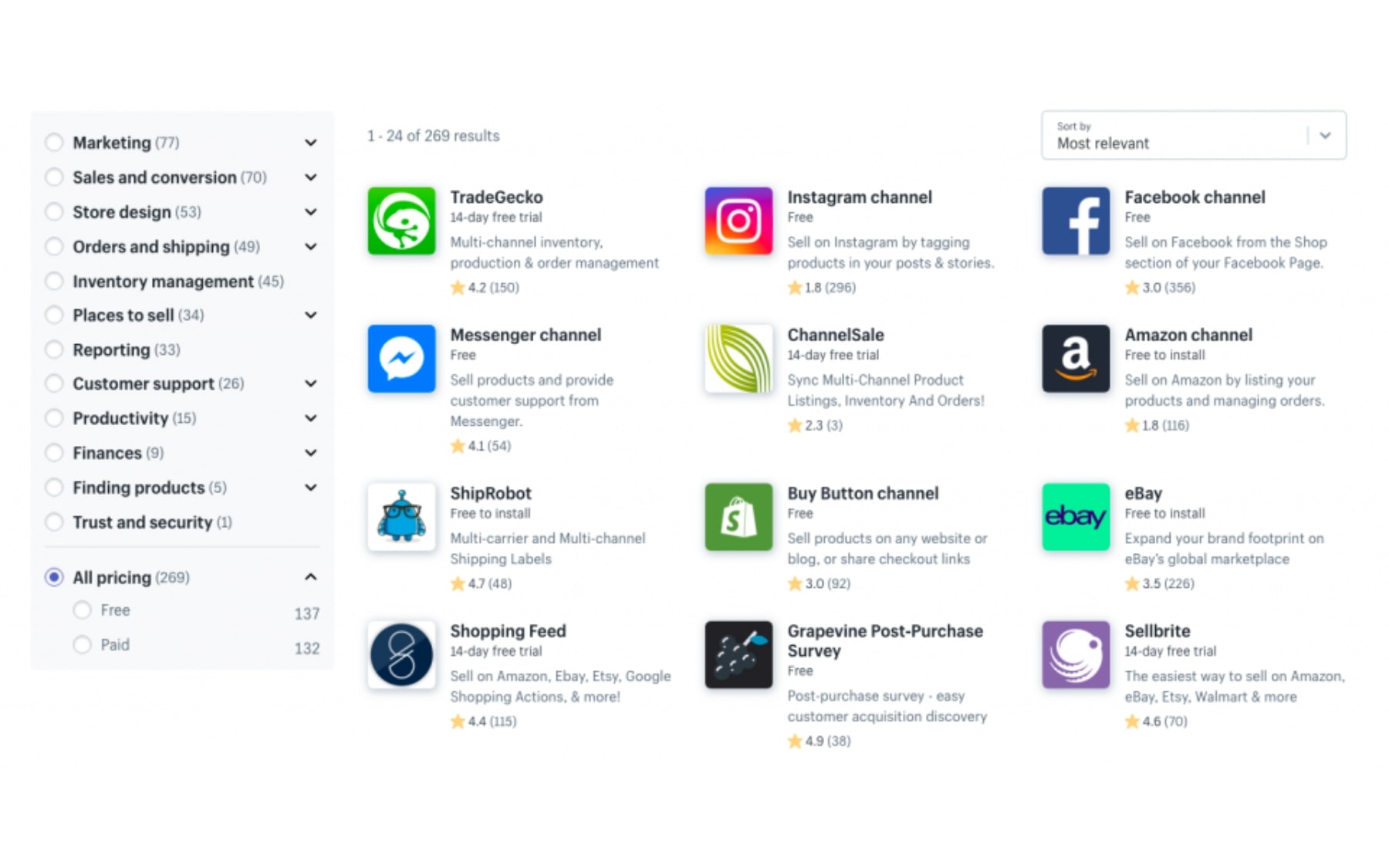
Each marketing channel attracts a unique audience with different preferences and behaviors. Utilizing multiple channels allows you to reach a broader spectrum of potential customers. For instance, social media platforms like Instagram may appeal to a younger demographic, while email marketing might engage an older, more established audience.
Provide great customer service and keep improving
Satisfied customers are more likely to make repeat purchases, refer others, and leave positive reviews. By consistently delivering outstanding service, you can build strong customer relationships that lead to increased loyalty and long-term profitability. The cost of acquiring new customers can be significantly higher than retaining existing ones.

Ensure that you offer customers a convenient means to communicate and inquire during the purchase journey, and make it clear how they can seek assistance and initiate returns or exchanges afterward. Shopify’s suite of store management tools includes features for delivering customer support via platforms like Facebook Messenger and WhatsApp, as well as monitoring shipment status, among other helpful capabilities.
Bottom Line
Shopify offers diverse pathways to profitability, whether you choose to sell your products, delve into dropshipping, offer print-on-demand services, or else. Leveraging the platform’s robust features, multiple marketing channels and excellent customer service can be key strategies to maximize your earnings. Ultimately, success on Shopify depends on your dedication, creativity, and willingness to adapt to the ever-evolving e-commerce landscape. So, pick the method that aligns with your strengths and goals, and embark on your journey to financial success with Shopify.
Featured article: Shopify Free Trial 2024: Unlock 33 Days on Shopify for $1
New Posts







